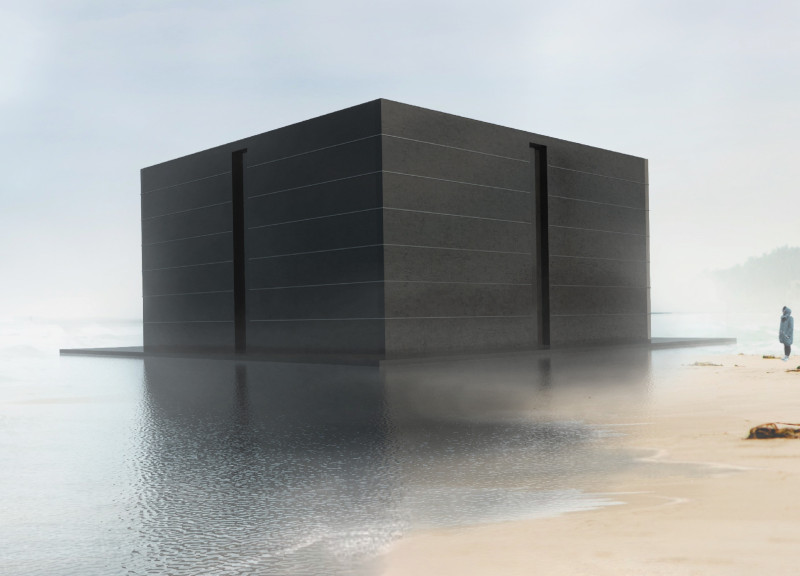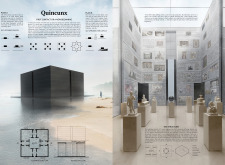5 key facts about this project
The pavilion designed for potential extraterrestrial contact is a concept that blends concealment with communication. Located underwater, the structure remains hidden until a signal indicates the approach of other life forms. This dual purpose highlights its role as a meeting point for initial interactions and as a preservation of human achievements. The design is informed by the pluralistic theory of civilizations, which serves as a framework for exploring essential human values.
Conceptual Framework
The arrangement of the pavilion is based on historian Felix Koneczny’s theory, which interprets the existence of multiple civilizations, each with its own distinct belief systems and frameworks. This framework drives the organization of the pavilion into five key areas: beauty, welfare, health, good, and truth. These categories help articulate the diverse experiences and perspectives of humanity, showcasing their varied understandings of fundamental concepts.
Spatial Organization
A central beauty room acts as the main feature, symbolizing the link between the physical and spiritual realms. Surrounding this space are rooms dedicated to welfare, health, good, and truth. Each room corresponds to its respective theme, allowing for an exploration of the interconnectedness of these ideas. The layout effectively showcases the richness of cultural expressions from different civilizations, inviting contemplation.
Cultural Representation
The pavilion’s walls display representations of seven civilizations: Latin, Jewish, Turanian, Byzantine, Brahminian, Chinese, and Arabian. This thoughtful representation of cultural heritage emphasizes the importance of historical context and the achievements that arise from collective experiences. It serves as a reminder that significant accomplishments are products of shared human journeys, providing a comprehensive exploration of our past.
Functional Dynamics
Functional gateways connect the different spaces within the pavilion, allowing movement and interactions. Each passage leads to the beauty room, which is partially obscured by a glass surface. This design choice encourages respect for the cultural expressions on display and invites visitors to reflect on their significance. The overall design fosters an experience of dialogue between visitors, art, and history, reinforcing the importance of both individual and shared narratives.
The architectural form becomes a physical representation of knowledge, memory, and interaction. It encourages deeper engagement with themes of human existence and the contemplation of connections beyond our world.


















































